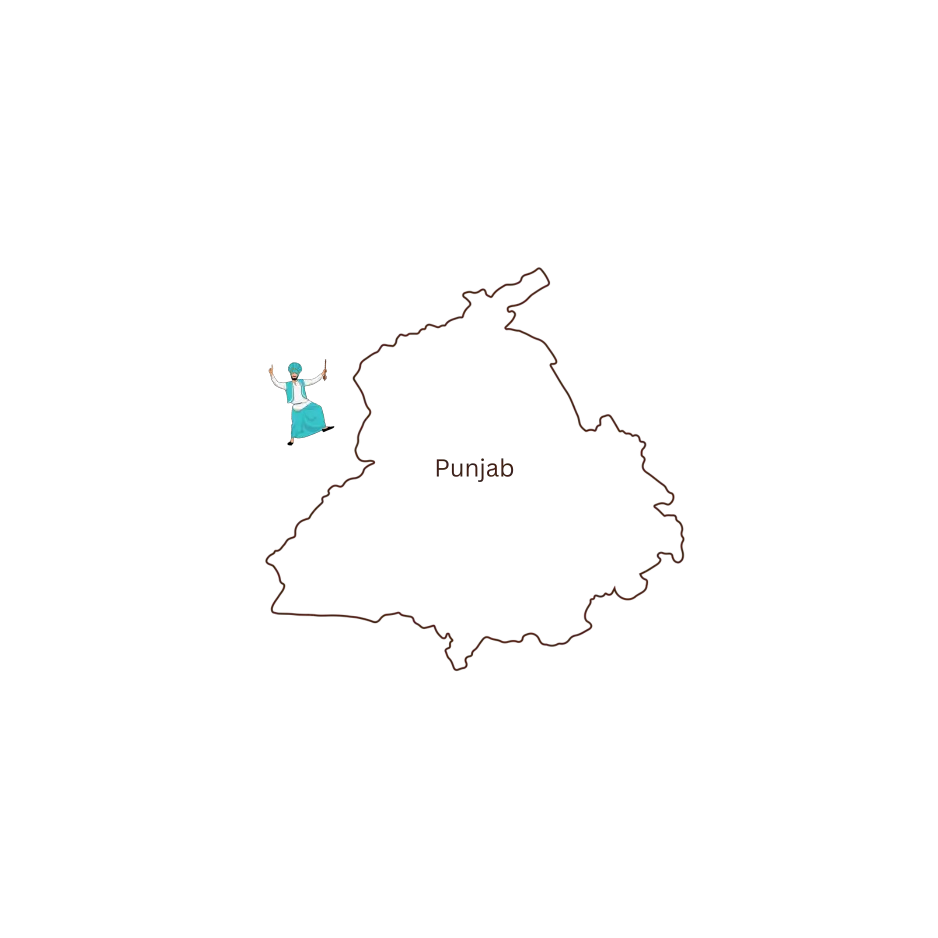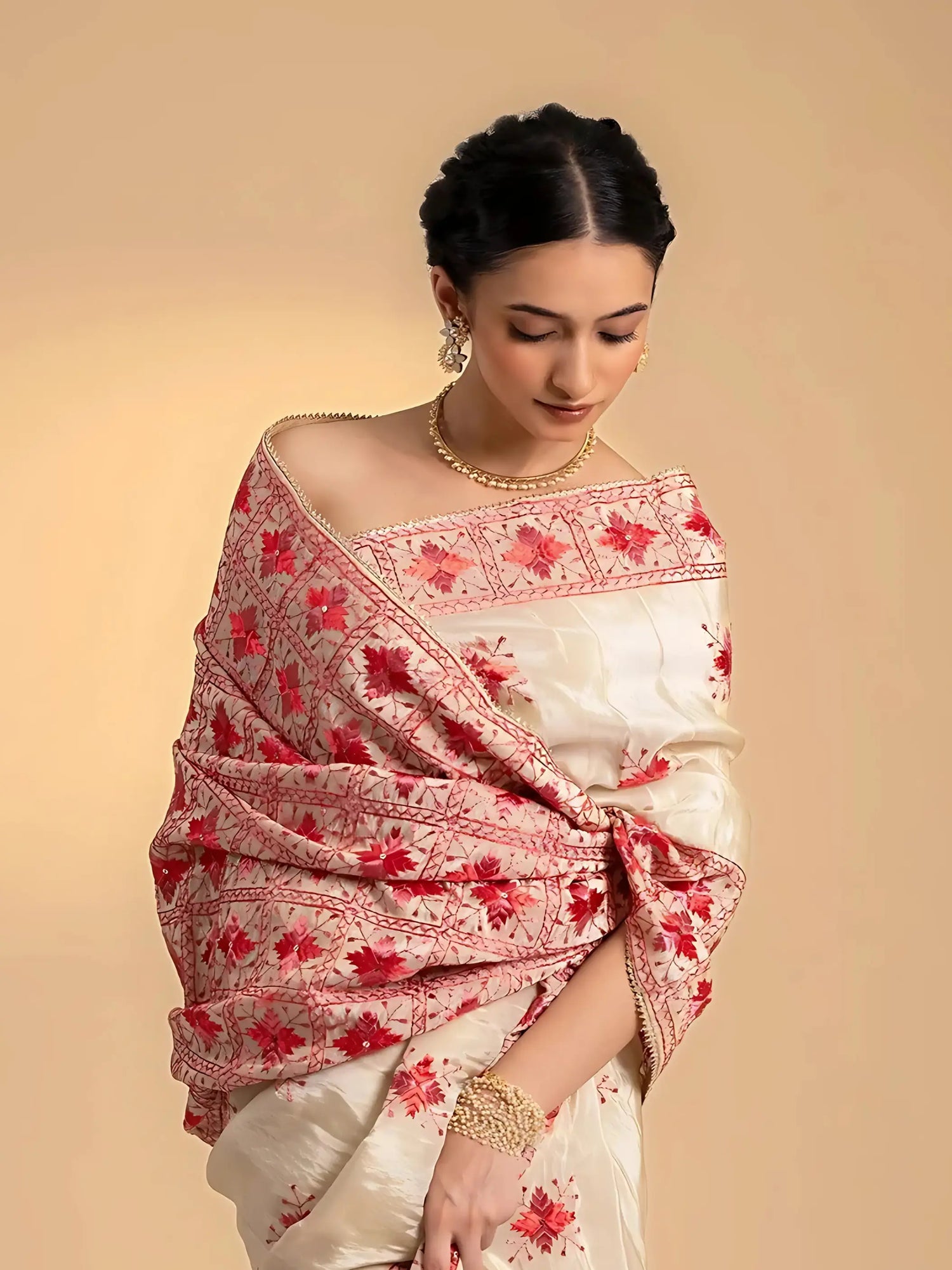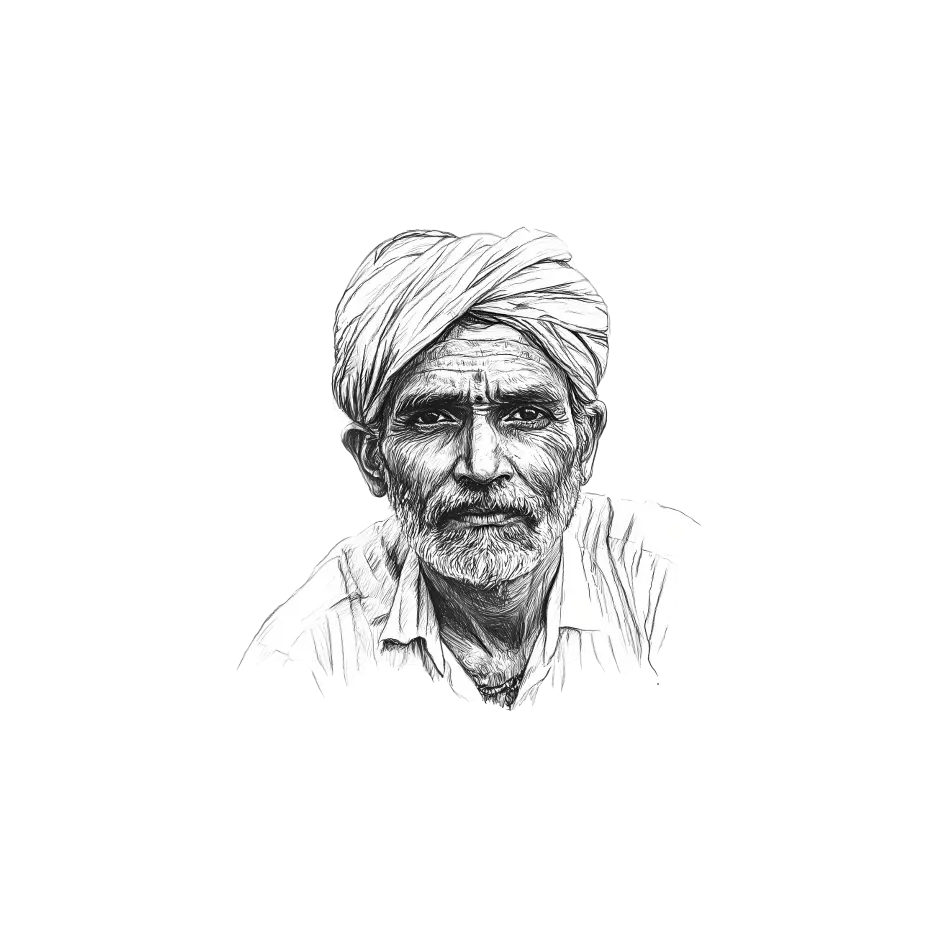
Phulkari Sarees: The Embroidered Pride of Punjab

A Heritage Woven in Threads of Color
Phulkari, meaning ‘flower work’ in Punjabi, is an intricate embroidery art that has flourished in Punjab for centuries. More than just an embellishment, Phulkari embroidery narrates the stories of Punjab’s rich traditions, joyous celebrations, and the skill of its artisans. While the technique was traditionally used on odhnis (scarves) and dupattas, its adaptation into sarees has given this folk art a modern resurgence.
Phulkari sarees are crafted on handwoven khaddar (cotton) or georgette, serving as a canvas for dazzling silk thread embroidery. Unlike printed or machine-stitched imitations, the hand-embroidered motifs are created using the darning stitch, where threads are worked onto the reverse side of the fabric, giving the designs a textured, embossed effect. Phulkari was once an essential part of a Punjabi bride’s trousseau, handcrafted by mothers and grandmothers as a symbol of love and blessings.

The Artistry: Embroidery, Motifs, and Regional Influence
Phulkari embroidery is characterized by vibrant silk floss threads and symmetrical patterns, each motif holding cultural significance:
- Bagh (Garden Phulkari) – The entire fabric is covered in dense embroidery, symbolizing prosperity and celebration.
- Sainchi (Figurative Designs) – Depictions of village life, animals, and daily scenes, narrating Punjab’s folklore.
- Chope (Bridal Phulkari) – A traditional gift for brides, stitched with deep red and gold to signify prosperity.
- Til Patra (Minimalist Phulkari) – Sparse embroidery on a plain background, offering a delicate, understated charm.
- Meenakari Phulkari – Inspired by Mughal-era designs, incorporating contrasting colors to create a jewel-like effect.
The magic of Phulkari lies in the interplay of colors and patterns, where skilled artisans use untwisted silk threads (pat)to create intricate floral and geometric motifs. Each saree is a celebration of Punjab’s vibrant culture, making it a timeless heirloom.

How to Identify a True Phulkari Saree
An authentic Phulkari saree stands apart due to:
- Handcrafted Embroidery: The stitches are visible only on the back of the fabric, ensuring the designs appear seamless on the front.
- Rich, Vibrant Colors: Traditional Phulkari sarees use naturally dyed silk threads for depth and brilliance.
- Uneven Yet Intricate Stitches: No two handwoven Phulkari sarees are identical, carrying the artisan’s unique touch.
Soft Handwoven Base Fabric: Unlike synthetic machine-made versions, genuine Phulkari is embroidered on handloom khaddar, georgette, or fine cotton.

The Beauty of Handloom: A Testament to Artistry
Handwoven sarees are more than fabric; they are an expression of human skill and dedication. Unlike powerloom textiles, which focus on speed and mass production, handloom sarees retain an organic touch—each weave carrying slight variations, a signature of authenticity. The drape, softness, and breathable nature of handwoven fabric make them superior to machine-made alternatives, ensuring comfort and elegance that only improves with time.

Meet the Artist: A Father-Daughter Duo
In the heart of Punjab, 28-year-old Simran Kaur embroiders her first Phulkari saree under the watchful eyes of her 54-year-old father, Harbhajan Singh. A master artisan, Harbhajan has been practicing Phulkari embroidery since childhood, carrying forward a family legacy spanning generations. Simran, eager to preserve this fading craft, stitches each floral motif with patience and passion, learning the art that once defined the identity of Punjabi women.
For her, Phulkari is not just embroidery—it is a revival of heritage, a tribute to her father’s teachings, and a way to keep Punjab’s artistic legacy alive in the modern world.
